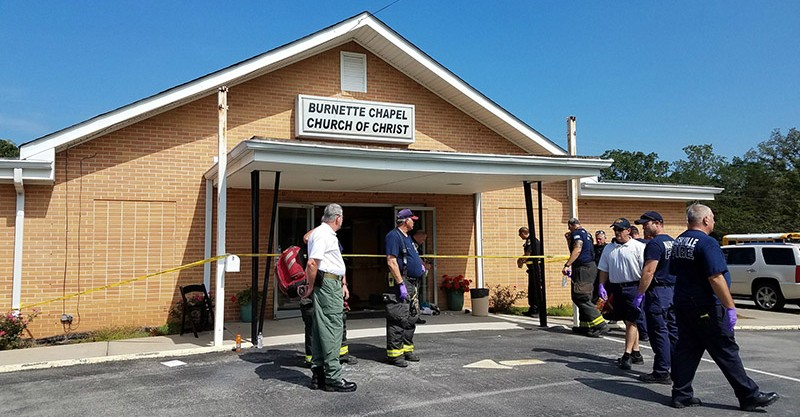When violence invades sacred spaces
A recent shooting at a church in Nashville, Tennessee, raises questions of safety in places of worship.

As people responded to the deadliest mass shooting in U.S. history, in which more than 50 people were killed and hundreds injured October 1 in Las Vegas, members of Burnette Chapel Church of Christ in Nashville, Tennessee, were mourning their own disaster. A shooting at the church on September 24 left one woman dead and seven others injured.
The attack conjured up memories of other shootings at sanctuaries, such as the June 2015 massacre at Emanuel African Methodist Episcopal Church in Charleston, South Carolina, and the August 2012 shooting at a Sikh temple outside of Milwaukee.
Attacks on churches are where Mike McPherson’s thoughts went as he waited at Vanderbilt University Medical Center for updates on his friend Joey Spann, who is Burnette Chapel’s minister.
“You think you’re going to be safe in church,” McPherson said.
Spann was shot on a Sunday morning in Burnette Chapel’s foyer while he was greeting people as they left the building, McPherson said.
A 25-year-old man who was born in Sudan was charged with criminal homicide. The Associated Press reported that a note found in his car alluded to avenging the white supremacist shooting at the historically black Emanuel AME in Charleston, though authorities did not reveal what the note said specifically. The suspect visited the multiethnic Burnette Chapel congregation a year or two ago.
People are shot at churches every year across America. There aren’t any official government statistics, but the Center for Homicide Research counted 137 shootings at Christian churches from 1980 to 2005. That’s probably an undercount, said senior researcher Dallas S. Drake, because older databases were less comprehensive.
A lack of funding and a lack of cooperation from congregations have frustrated researchers. Drake, who monitors national news reports through Google alerts, said he hasn’t noticed any clear trend in recent years.
Houses of worship struggle to be both welcoming and secure. Some congregations across the nation hire private security or off-duty police.
“You can’t pat someone down and give them a hug at the same time,” said Lt. Todd Caron of the Anderson County Sheriff’s Office in South Carolina.
Caron said he thinks churches are on average safe places but believes people still must be aware of their surroundings.
“We can still be open and loving and be cautious and prepared,” he said. “When greeting people, you can’t give them the stink eye. But you should notice if they’re disgruntled or upset, they may need some help or you may just want to keep watch on them.” —USA Today
Mike Reicher and Mike Ellis contributed to this article, which was edited on October 6. A version of it appears in the October 25 print edition under the title “When violence invades sacred spaces.”





